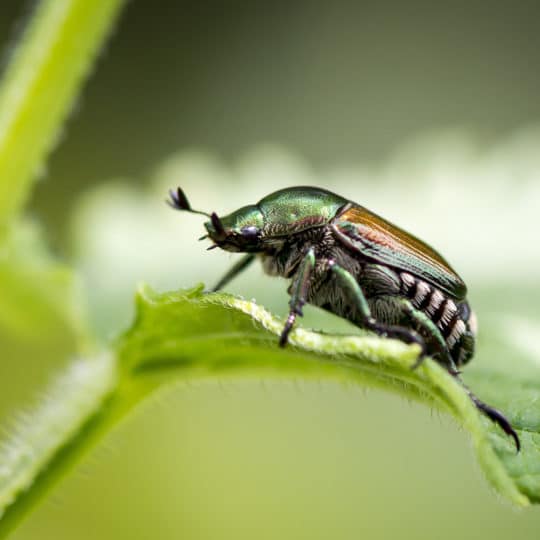Preparing for Japanese Beetles
Raise Your Garden Defenses
Posted
May 23, 2019

Chances are you’ve seen the signs of Japanese beetles in your area. These metallic-green, winged creatures leave skeletonized leaves behind in your garden as they buzz from bud to bud. But there are ways of dealing with these garden pests before they completely decimate your dear plants.
Prepare Your Plants for Japanese Beetles
Especially if you’ve had infestations before, you can help protect your plants this season. Defending your garden is a multi-part process.
Spray the plants with a pyrethrin-based insecticide or neem oil as a precaution in early spring or at the first sign of an attack. These products also help guard against other beetles and pests in your vegetable garden or flower bed. Here are some of the beetle-loving plants to keep a close eye on:
- Apple
- Japanese maple
- Norway maple
- Pine oak
- Birch
- Fruit trees; cherry plum, apricot, and peach
Insecticides also help control the grub population. So, even if some plants don’t make it through this season, there’s less of a chance grubs survive to grow into beetles next year.
Milky Spore also kills grubs. It takes a year or so for it to establish itself in your soil, but it keeps working for 10 years or more.
Catching Beetles
If you see any beetles on your plants, don’t be afraid to pick them off. They’re visible and slow—especially early in the morning—so they’re easy to remove. Toss them into a bucket of soapy water to ensure they won’t return to your plants.
Japanese beetle traps are only recommended if you have a large yard. Obviously, you don’t want to attract them to your garden, so place the trap far away from any vulnerable plants. Put the trap out for a day or two at a time every couple of weeks.
For more tips on dealing with Japanese beetles, or professional help getting rid of any garden pests, contact the specialists at Elite Tree Care.